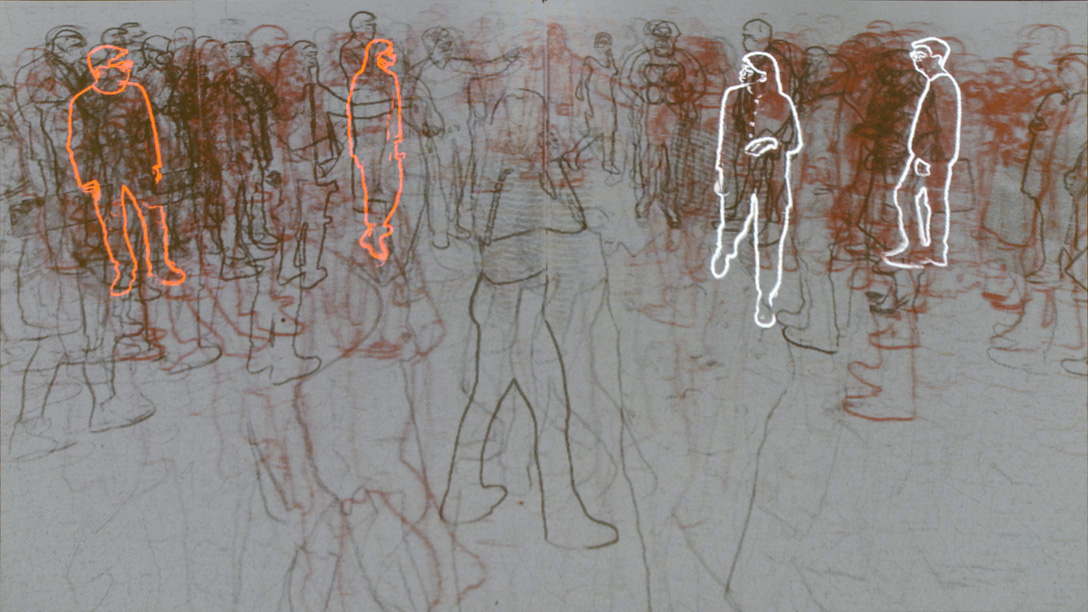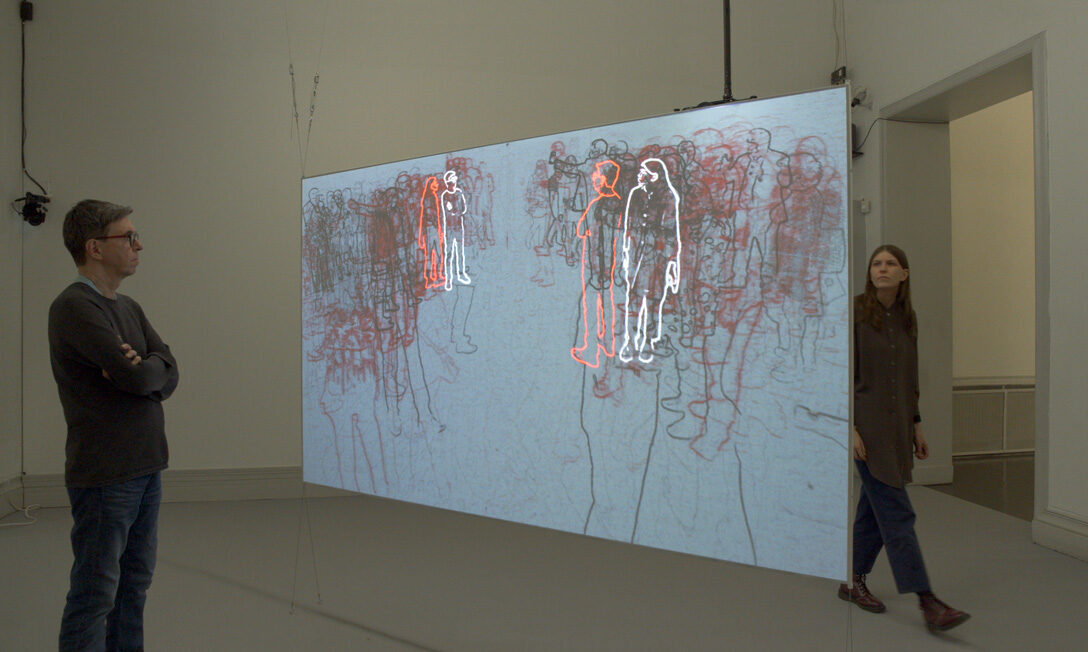Immersive computer aided video installation. Edition: 6
2022
On Whose Side is a socio-spatial experiment, in which the spectator’s (inter)action is accumulating into the work’s memory, as a layer of its recorded visual history. Two cameras capture the space and the spectator from opposite corners of the installation. The real time camera information is then reduced to the outlines of the spectator. In the projection, the spectator can see him/herself simultaneously on opposite sides of the space, as if observing and aiming the gaze at his/her own double – one figure being white and the other red.
These white and red outlines are superimposed on the grey background with the history of traces drawn from the previous visitors. The most recent traces of the history are seen as black and dark red lines, and in time the history fades gradually into the grey background, giving space to the continually accumulating layers of history. The structure of the installation leads to a more or less circular conglomeration of spectators’ trajectories.
Rather than being a historical archive, On Whose Side plays with the idea of a past, and its abstract ability to be visualised. On the other hand, the work’s idea stems loosely from the concept of confrontation – how to encounter “the other”.
On Whose Side – structure of the installation
On Whose Side is installed into a square space. The projection screen, the two cameras and the lamps are placed on the exact same diagonal vertical plane. Wide-angle lenses allow the cameras to capture the entire space. There are two entrances near the corners of the space, and the spectator can freely walk inside the space while looking at the projection.




